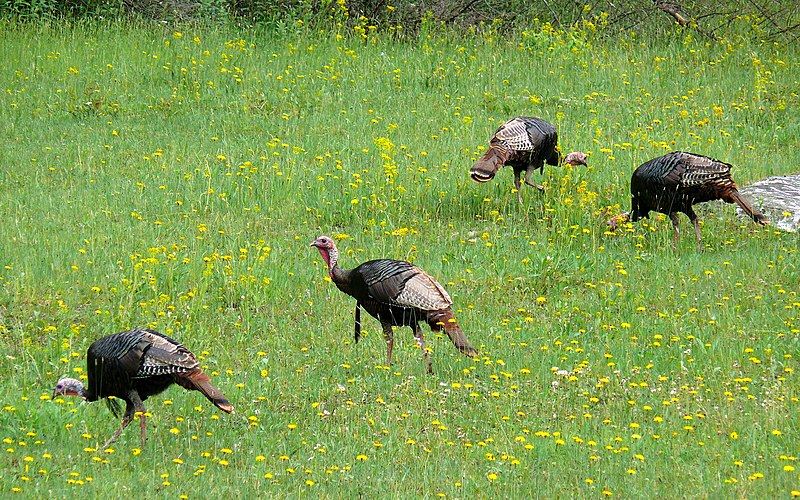|
Another turkey day has come and gone. What’s weird about a President pardoning a turkey, an annual tradition since 1989, is the notion the turkey did something wrong to pardon. Supplied by the turkey industry’s advocacy body and bred for consumption rather than longevity, the pardoned turkey rarely lives long after its reprieve.
That’s just one of the incongruities linking turkey dinners to gratitude. Long domesticated in pre-Columbian North America, turkeys came to Europe with the Spanish in the early 1500s. Their English name reflects their resemblance to guineafowl, native to Africa and imported to Britain via Turkey in western Asia. Chancing on wild turkeys in fields or thickets was among the delightful surprises of my move to rural Wisconsin. They are huge. They scratch for food in our lawn and peck at our glass. Unlike their fattened, domesticated cousins, wild turkeys can fly to hide or roost in trees. Because they stay fairly low and don’t migrate, they offer hunters easy prey. Overhunting and deforestation cut their U.S. numbers to fewer than 30,000 in the 1930s, but they're now back up to more than seven million. As I wrote two years ago, the origins of American Thanksgivings in the 1800s had nothing to do with Pilgrims or Indians. Turkeys were plentiful and big enough to feed a family gathering. To share a meal in a spirit of love, abundance, and gratitude is a tradition worth keeping, regardless of the menu. Image: Ken Thomas, wild turkeys, 2008.
0 Comments
Leave a Reply. |
AuthorI'm a historian who writes novels and literary nonfiction. My home base is Madison, Wisconsin. Archives
July 2024
|

 RSS Feed
RSS Feed